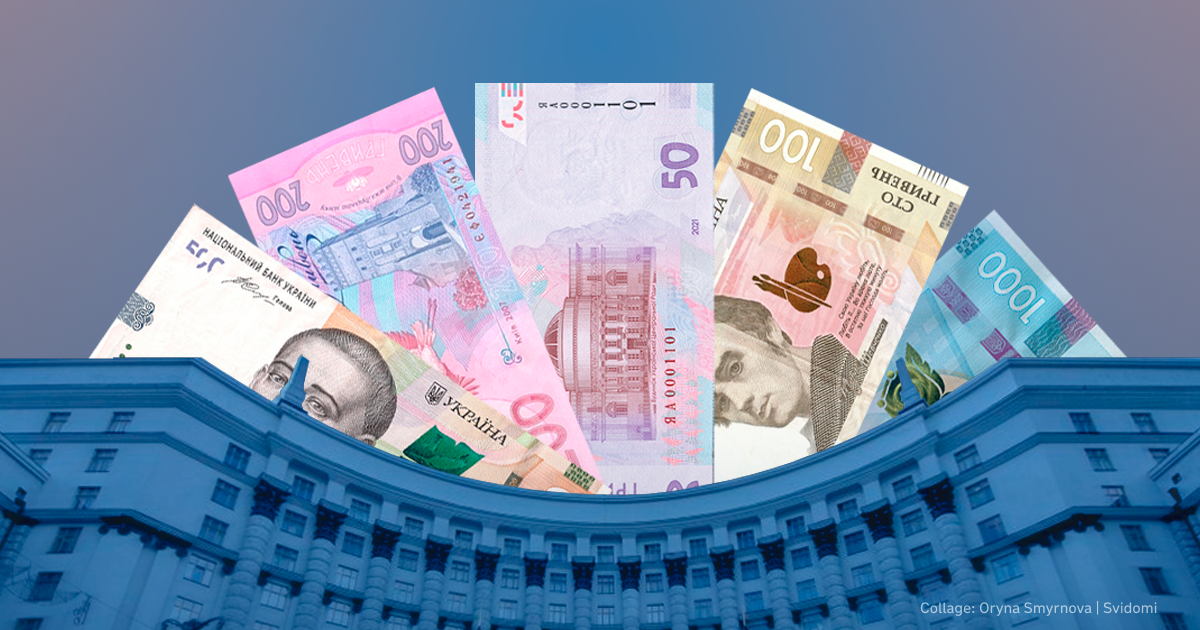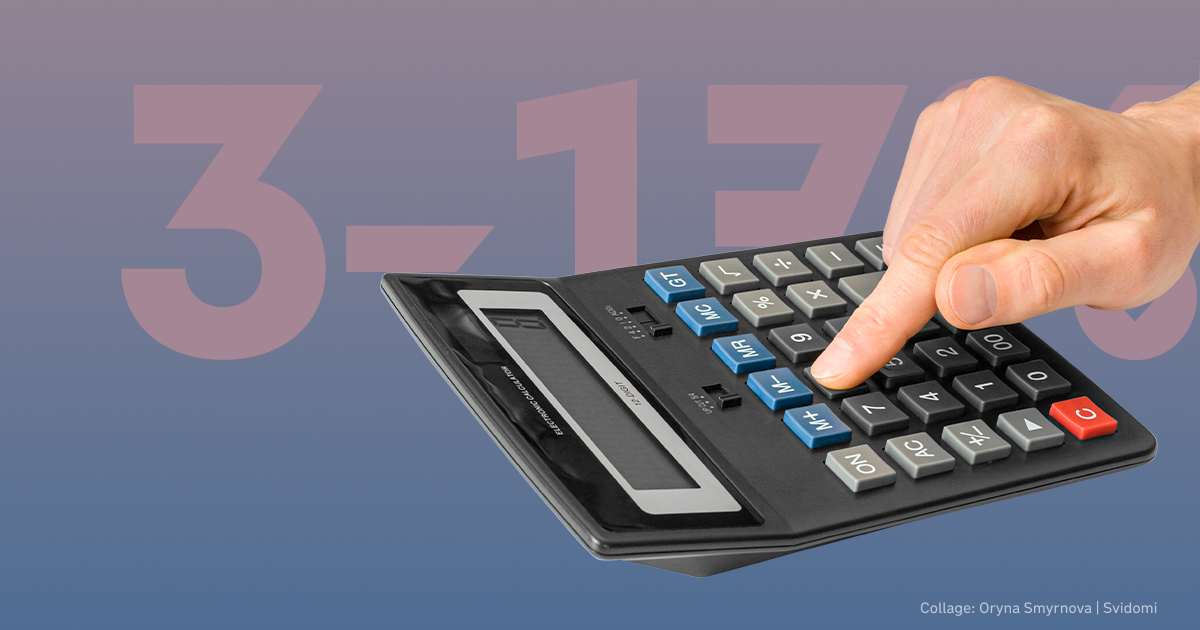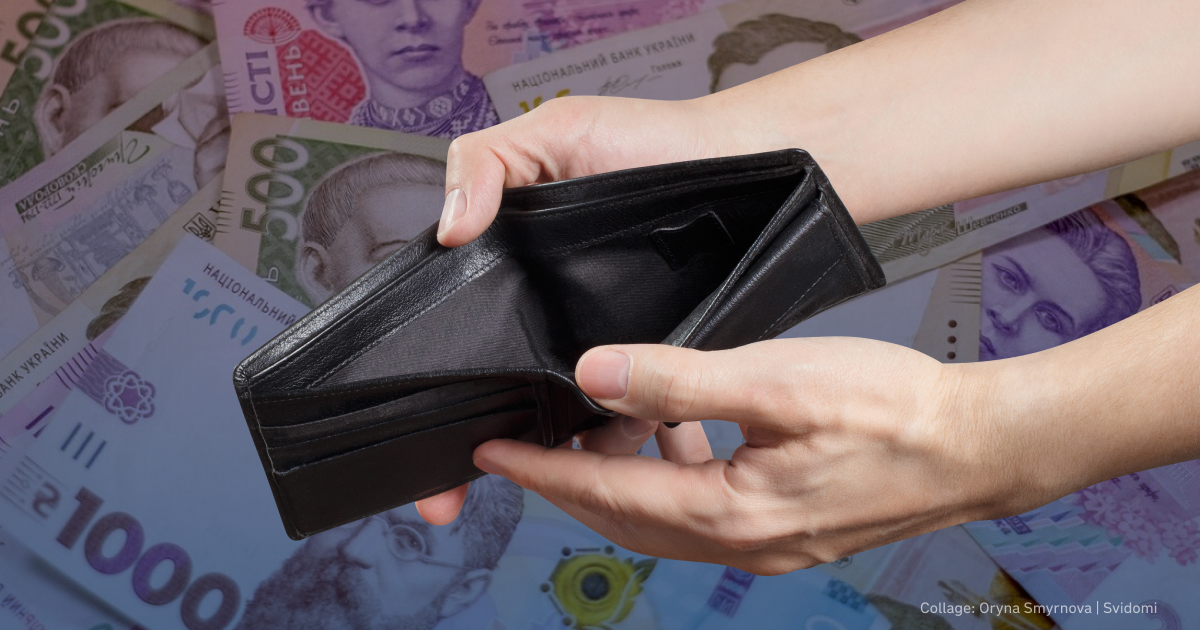The back-up plan for the economy. How can Ukraine cover the costs of the war?

Ukraine's budget spendings for 2024 exceed budgeted revenues by almost double. Ukraine plans to spend more than UAH 3.3 trillion while receiving revenues of just over UAH 1.7 trillion.
Ukraine will spend all domestic revenues on defence. These include taxes, customs duties, domestic government bonds, etc. Assistance from partner countries is expected to cover social spending on pensions, benefits, and public sector salaries, amounting to almost $40 billion.
However, assistance from partners does not come in on a regular basis to cover the deficit. The European Union approved the Ukraine Facility funding package only in February 2024, after a long blockade by Hungary. The United States spent eight months considering a $60 billion aid package for Ukraine, which was not approved until April 2024. In such circumstances, Ukraine will be forced to look for other options to finance the economy, even during the war, when Russia is firing missiles at Ukrainian infrastructure — energy, industry and logistics.
In this article, Svidomi discusses possible scenarios for financing the Ukrainian economy.
Scenario One: Changes in fiscal policy
In December 2023, the government approved the National Revenue Strategy until 2030. Thus, the government plans to align the tax system with the EU system, including the value-added tax (VAT). The government intends to minimise VAT exemptions — the rate will now be no less than 15%.
Currently, personal income tax is 18% and will be subject to a graduated rate. The strategy does not specify the exact rates, which depend on an individual's income level and will most likely be introduced by separate legislation.
Finance Minister Serhii Marchenko says this strategy is intended for the long term and aims to gradually transition the entire tax system to a unified system and build trust between the taxpayer and the tax system. In addition, adopting the strategy does not mean the immediate introduction of new tax rates, so it is not the main scenario for finding financing for the budget deficit but a way to stabilise Ukraine's economy in the future.

Alina Boiko, a senior expert at the Reform Support Team of the Ministry of Economy, says in a commentary for Svidomi that the government could first introduce existing taxes to pay for those areas that currently do not pay them. For example, to introduce a military fee for individual entrepreneurs.
“Currently, the military tax is 1.5%. Individual entrepreneurs do not pay it. At the same time, the government is drafting a bill to introduce mandatory payment of military fees to single taxpayers. Although such an innovation for private entrepreneurs contradicts the very concept of the simplified taxation system, requiring minimal taxes and reporting, it is a potential scenario under martial law,” she explains.
Alina Boiko does not rule out the possibility of raising tax rates now to cover the budget deficit. In her words, the government may introduce advance income tax payments by companies engaged in fuel retailing.
According to People's Deputy Danylo Hetmantsev, the government is working on reforming the Bureau of Economic Security, taxes, and excise duties. There are no plans to introduce new tax rates for individuals and legal entities in 2024.

The simplified tax system in Ukraine, unlike in most EU countries, is currently almost parallel to the general tax system. Small businesses are part of the tax system and differ only in the type of activity and turnover. Therefore, reforming this system to increase taxes for its users is not only a specific scenario for generating income in the future but also an integration point for Ukraine.
According to the National Revenue Strategy, the simplified tax system for individual entrepreneurs will be reformed. The second and third groups will be merged, and diversified rates will be introduced — depending on the type of activity, entrepreneurs will pay from 3% to 17% of their income. The fourth group, which includes agricultural producers, will receive a tax increase to encourage them to switch to the general system. The government wants to leave only small businesses with leased/owned land in this group.
By the summer of 2023, more than two million sole proprietorships had been registered in Ukraine. The growth dynamic is rapid, with more than 300,000 sole proprietorships opened by Ukrainians in 2023. The government's attention to small businesses and the regulation of their opening, operation, and taxation should be no surprise.

Alina Boiko says that large companies can use the simplified tax system to optimise their tax payments, which is why there may be such an increase.
Retail, IT, and food and beverage were among the most popular sectors among new small entrepreneurs. The second group, “simplified taxation,” includes activities in the catering industry.
Alina Boiko also says that the abrupt transfer of small businesses to the general system will be a shock and may increase the size of the “unrecorded” economy.

“If, for example, differentiated tax rates are applied depending on the area of activity of a private entrepreneur, the shock effect on the economy will be less. Fiscal policy is the exclusive responsibility of each EU member state. Therefore, neither Ukraine's integration into the EU nor the low level of taxation of individual entrepreneurs is a reason to abolish or change the simplified tax system beyond recognition. This system was introduced to stimulate small business in Ukraine,”
she concludes.
Scenario Two: Managing the Tax Collection System
Introducing new taxes is a rather lengthy process of changing laws and regulations, which cannot bring immediate economic benefits. Therefore, the government constantly looks for new ways to accumulate budget revenues.
In 2023, this option was chosen to redirect the personal income tax of military personnel from local budgets to the state budget. The changes were made in November, and the income tax began to be deducted from the budgets in October.
This harmed local budgets. They counted on these revenues to maintain the municipalities, especially those near the frontline, where there are the most military personnel and the most damage from Russian attacks. Due to this decision, the state received about 100 billion UAH in additional funds.
Therefore, the government can continue to administer the fee system, reallocate taxes between different budgets, and increase indirect taxes such as excise and customs duties.

The government is already considering increasing excise taxes on tobacco and alcohol. In January 2024, the Ministry of Finance introduced a draft law to increase excise taxes on tobacco products. The main reason is to bring Ukrainian legislation into line with EU legislation. Ukraine must ensure compliance with the EU directive on the minimum excise tax liability of at least 90 euros per thousand cigarettes.
Ukrainian activists from the NGO Center Life also demand a corresponding increase in the excise tax on heating tobacco products (HTP). Currently, the government plans to set the excise tax on these types of heated tobacco at 72 euros per thousand pieces. Activists argue that this will cause the government to lose budget revenues. Currently, Ukraine does not treat HTPs the same as regular tobacco cigarettes, so they are subject to different excise tax rules.
In March, the government approved aligning excise taxes with EU standards. As a result, the excise tax on alcoholic beverages increased from UAH 8.42 to UAH 12.23 per litre. By 2028, excise taxes on fuel are expected to increase by about 60% to 359 euros per thousand litres for gasoline and 330 euros per thousand litres for diesel.
Yurii Haidai, senior economist at the Center for Economic Strategy, said in a commentary for Svidomi that Ukraine must also raise excise taxes to combat the 'grey market' of excisable goods. This is often the 'grey' import of tobacco and fuel. This is a joint effort of the government and the customs service.

According to the State Customs Service of Ukraine, in the first 11 months of 2023, Ukraine imported over $57 billion worth of goods, $32 billion of exports, and more than $47 billion of taxed imports. Among other categories of goods, Ukraine imported motor vehicles and fuel most.
Raising customs duties on non-food items could be a quick fix to fill the budget. However, Ukraine is still at war with Russia, so customs do not tax drones and goods for their repair. Also, cars for the military with a letter from the unit are not subject to customs duties. In other cases, customs duties are calculated individually, depending on the car's cost and condition, engine type, etc.
Haidai notes that changes should first be introduced at the customs to reduce ‘grey’ imports, and then tax rates should be raised.

"We need qualitative changes in customs, which will reduce the share of black and ‘grey’ imports, increase VAT payments, increase customs duties, and improve the situation for Ukrainian businesses competing with black and ‘grey’ imports,"
he explains.
Yurii Haidai notes that these are only some taxes the government should consider in order to finance the budget.
“It makes sense to increase taxes on luxuries in one form or another. That is, increasing the tax burden, for example, through a military tax on real estate transactions, better administration and an increase in the transportation tax on expensive cars, the introduction of a military tax on jewellery, and a possible increase in the real estate tax (especially on expensive properties),” Haidai concludes.
At the same time, Haidai believes that improving tax administration is the most essential thing Ukraine needs to do now to find funding for the state budget.
Scenario Three: Increased money supply
The primary function of national banks in each country is issuing or putting new banknotes into circulation. Issuance does not just happen but is calculated according to gross domestic product and the inflation rate. Issuing money, or so-called “printing money,” disproportionate to inflation and reserves can lead to hyperinflation and economic collapse.

Since the start of the full-scale invasion, the National Bank of Ukraine has resorted to printing money once, in the spring and summer of 2022. At that time, the NBU printed UAH 400 billion.
In July 2022, the Verkhovna Rada adopted amendments to the budget for 2022. Among them was an amendment initiated by the Ministry of Finance that would have obliged the National Bank to print money to cover the budget deficit due to active hostilities.
Such government actions violated the law on the National Bank, according to which the institution must remain independent from the executive branch, especially in the operational framework, which includes the issuance of money.
In 2022, former NBU Head Kyrilo Shevchenko explained that at the beginning of the full-scale invasion of Ukraine, there was no choice but to print money. The destruction of logistics and infrastructure, the loss of businesses due to the occupation and Russian attacks led to a sharp decline in tax revenues. At the same time, Ukraine's budget was growing due to the cost of the war. The issue made it possible to “support the country's defence capability, ensure the smooth functioning of critical infrastructure and the public finance system as a whole” However, Shevchenko recognised that this path was suboptimal, preventing the economy from growing and leading to inflation in the long run.

By 2022, most of the printed hryvnia had been absorbed by Ukraine's finite foreign exchange reserves. This financing scenario was postponed in the autumn of that year as US and EU aid to Ukraine began to flow. In November 2022, the European Union approved an €18 billion aid package for Ukraine in 2023.
In the spring of 2023, NBU Head Andrii Pyshnyi told the Financial Times that “issuing is a dangerous tactic” and that the NBU would not resort to it.
Alina Boiko, a senior expert at the Ministry of Economy's Reform Support Team, agrees with the NBU governor's position. However, she confirms this is a quick way to fill the budget.

“Flooding the economy with money not backed by a corresponding amount of goods and services only leads to devaluation or depreciation of the national currency. Ukraine did not use this option in 2023,”
the analyst said.
At the same time, the National Bank stresses that Ukraine should first rely on international financial assistance from its partners to cover the budget deficit.
Mariia Tomilina, an economist at the Centre for Economic Strategy, confirms the NBU's position that issuing hryvnia is an extreme scenario for the Ukrainian economy.
“The NBU will take such a step only if international aid stops, and there are no domestic resources to accumulate funds for expenditures other than military ones, provided the war continues,” she concludes.


